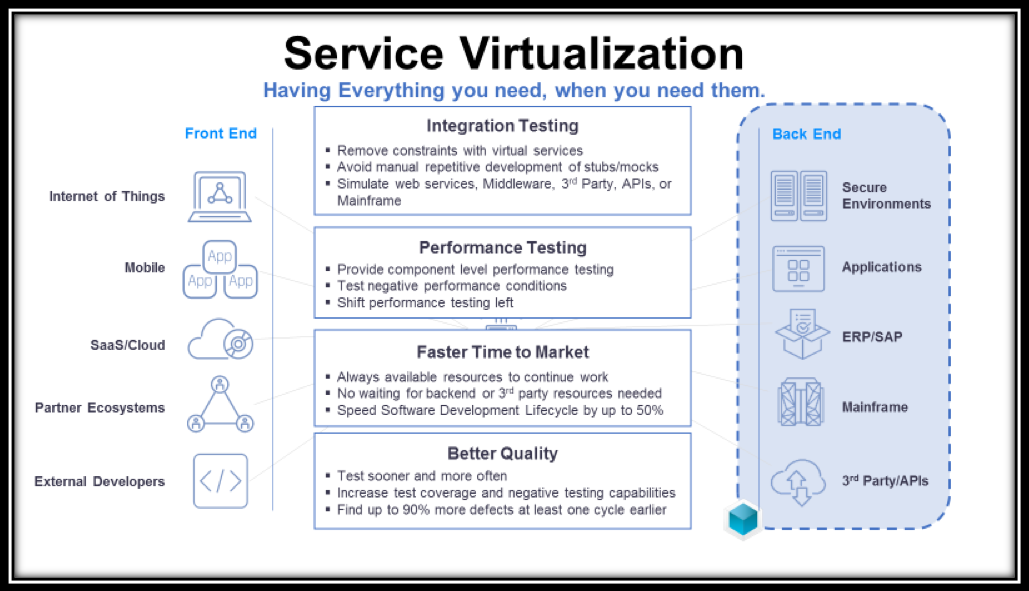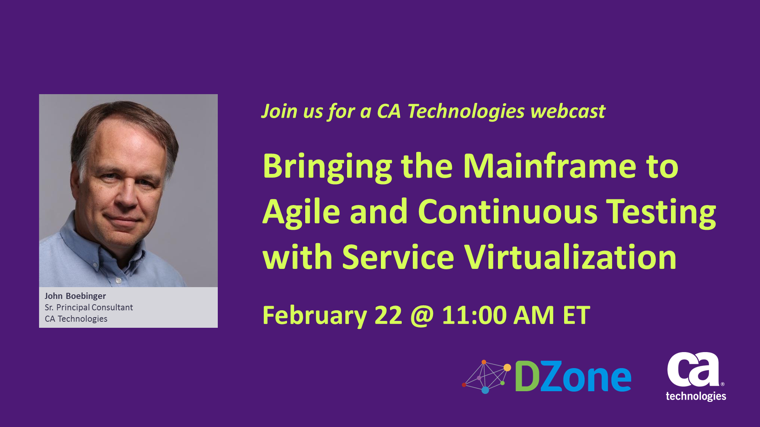Making Mainframe Agile in Continuous Testing With Service Virtualization [Webinar]
Learn more on how Service Virtualization can help bring mainframe into more modern development testing practices such as Agile and Continuous Testing by attending CA's upcoming webinar on the topic.
Join the DZone community and get the full member experience.
Join For FreeMainframe systems are the IT backbone and workhorse for many organizations, providing instrumental back-end transaction processing, databases and reporting functionality. Although they are often thought of as legacy systems, this misleading characterization discounts the fact that these systems often hold extremely critical business logic and still receive heavy investment.
Organizations that develop and test applications in mainframe environments have struggled to keep up with users’ increasing demands for innovative, new functionality, especially considering the trend many organizations are adopting in moving to Agile development and testing practices. For one, mainframe development can require decades’ worth of legacy expertise, which is in danger of disappearing as a generation of workers approach retirement. In addition, modern, client-facing applications driven by the mainframe are being accessed by growing numbers of users via smartphones, tablets and other devices – stressing mainframes in unforeseen ways. Finally, there is the significant cost of sourcing the additional MIPS needed to support new development and test requirements within the mainframe – not to mention the time and resources required to install these complex systems.
Because of these factors, new challenges have arisen within mainframe development and test operations, such as unavailable systems, inability to accurately model performance and complex test data requirements. However, by employing service virtualization to model the core business logic in mainframe platforms and their integrations with other in-house and third-party systems, teams can free themselves of these constraints, leading to faster build and test cycles, higher quality applications and lower costs.
Most new enterprise applications are built in modern, distributed environments and supported by multiple service teams and delivery partners. Existing mainframe systems provide dependent system data for these heterogeneous applications – an approach that leads to multiple constraints within application development, including unavailable dependencies, poor performance, conflicting delivery schedules and test data constraints. On top of these constraints, it is often too cost-prohibitive for most organizations to purchase the additional MIPS it would take to resolve these conflicts within their main- frame environments.
By capturing and simulating the behavior, data and performance characteristics of dependent systems and deploying a virtual service that represents those systems, service virtualization removes the development constraints of unavailable systems, conflicting delivery schedules and data volatility. This allows software to be developed faster, with lower costs and higher reliability.

Service Virtualization can be used to virtualize Mainframe applications or virtualize within the Mainframe to bring Mainframe to Agile and Continuous Testing practices. Virtualizing Mainframe applications helps reduce mainframe costs by eliminating the requirement for additional MIPS, disk space, and software license. Additionally, virtualizing within the Mainframe helps to deliver uninterrupted, stable development and testing of applications including negative testing, while allowing for parallel development, something commonplace in Agile teams.
If you want to learn more on how Service Virtualization can help bring mainframe into more modern development testing practices such as Agile and Continuous Testing, make sure to attend the upcoming webinar on the topic. February 22, 2018 at 12 pm EST/9 am PST. Registration link.
Opinions expressed by DZone contributors are their own.


Comments